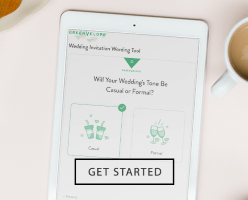Wedding Budget Breakdown: How Much to Spend Per Category
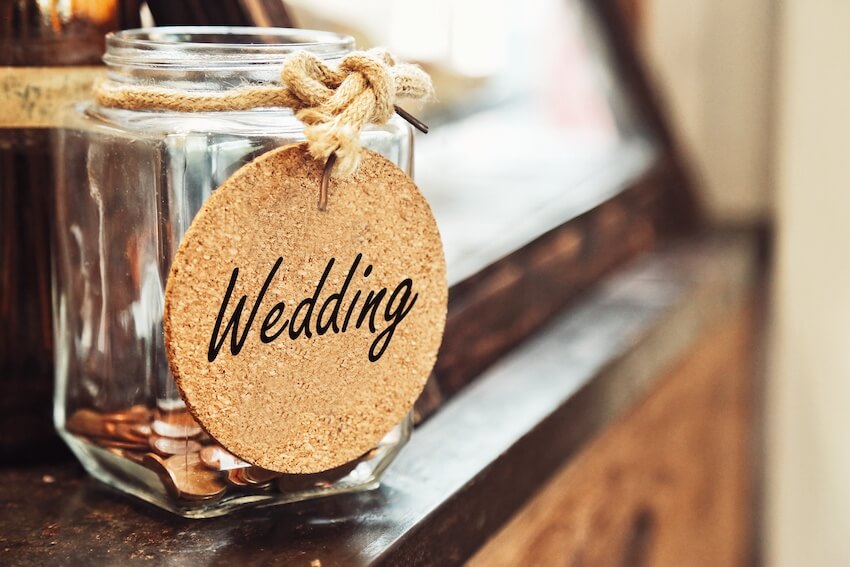
You’re happily engaged and thrilled to start planning your nuptials. While fun tasks like ring shopping, cake tasting, and venue visits are easy to get excited about, most couples first need to settle on a wedding budget. It’s the first step in the planning process and it lays out a smooth path for making decisions down the road.
Wedding costs can easily get out of hand if you don’t set a budget, so it’s important to tackle this task early on. To help you out, we’ll show you how to set a budget for your wedding and share tips for crafting a wedding budget breakdown that meets your priorities. With a well-crafted budget, you can avoid unnecessary stress and set yourselves up for a beautiful wedding day and financially stable journey as newlyweds.
How to Set a Budget for Your Wedding

Whether you’re planning the most expensive wedding in the world or are, like most people, just trying to set reasonable expectations, it’s critical to create a budget. Setting a budget for your wedding can feel daunting at first, but a little planning goes a long way. By breaking down larger tasks into smaller jobs, you can create a wedding budget breakdown that’s much easier to manage.Â
Your wedding budget will largely be dictated by fixed costs and fluid costs.Â
The fixed costs include flat fees for things like a wedding photographer and videographer, officiant fees, and marriage license fees.Â
Fluid costs are prices for things that will change depending on the size of your guest list.
That’s why it’s vital to start by creating a wedding guest list. Costs for food, the venue, and rentals can increase dramatically as you increase the number of guests. By making a guest list and sticking to it, you can avoid any surprise increases in costs. Plus, it helps inform how you’ll spend your total budget.Â
In general, 30–50% of a wedding budget goes to the wedding ceremony and wedding reception venue and catering, including the wedding cake. This includes rentals such as tables, chairs, and linens. By limiting your guest list, you can save money on these costs and use it on other items like attire, beauty, and special gifts for your wedding party.
The big question is: How much should you spend on the wedding? That depends on your finances and how much you’re willing to spend. For reference, the average cost of a wedding in 2023 was $29,000. However, that doesn’t mean you need to spend that much.
Before choosing a budget number, you and your partner should review your personal financial situation.Â
Start by asking the following questions:
- How much money have we saved and how much are we willing to use for the wedding?
- How much money are family members going to contribute?
- Are we going to borrow money or put some expenses on credit cards?
- Are we comfortable having debt to create our dream wedding or do we only want to use funds we already have?
- How many guests do we want to invite and what are our priorities?
Once you determine the number, you can start planning how you want to divvy up the funds for your big day.
How to Create a Wedding Budget Breakdown

Your wedding budget breakdown should reflect the wedding you want to have. If you have your heart set on tying the knot in a castle or in an exotic destination wedding, a large chunk of your budget will go toward the wedding venue. If you prefer getting married in a park or are planning an elopement on a beach for free, you can splurge on other things like catering and photography.Â
Maybe you’re willing to spend more on a stunning, custom-designed wedding dress or working with a florist to create one-of-a-kind centerpieces and wedding flower bouquets. Perhaps you want to go the DIY route to save some money or maybe you want to work with a professional wedding planning agency that has in-depth know-how to create your dream wedding.
Like venue costs, food costs can take up a big chink of your wedding budget, especially if you have a higher guest count. If you want a rehearsal dinner, cocktail hour, reception dinner, open bar at the after party, and a final wedding brunch before guests leave, expect to set aside more budget for this.
It really comes down to your priorities. That’s why it’s crucial to take time at the beginning of the planning process to decide what your must-haves are.
The timing of your wedding can also impact costs. Summer is the most common time of year for weddings and it’s also the period when prices are the highest based on demand. If you want to prioritize extras like fancy wedding favors, an over-the-top photo booth, or custom signage, consider tying the knot in winter when wedding vendors have more availability and typically lower pricing. This will cut down your overall costs, freeing up your budget to do more fun things.
Once you have an idea of your priorities and what you want to spend, sketch out your wedding budget breakdown. This will help you visualize where your money will be going and also ensures you’re spending the most on the things that are important to you.
Wedding Budget Breakdown Example

Every wedding is as unique as the couple, but there are some commonalities to consider. Below is a sample breakdown of percentages for the most common wedding expenses, including stationery and decor, as well as things like entertainment and transportation:
- Venue: 20–30% of your wedding budget
- Catering: 15–20% of your wedding budget
- Cake: 3–5% of your wedding budget
- Photography and videography: 12–15% of your wedding budget
- Officiant: 1–2% of your wedding budget
- Wedding attire and beauty services (dress, tux, makeup, etc.): 5–10% of your wedding budget
- Flowers and decor: 10–15% of your wedding budget
- Entertainment: 8–10% of your wedding budget
- Wedding invitations and stationery (place cards, RSVPs, ceremony programs, etc.): 2–3% of your wedding budget
- Favors and keepsakes: 2–3% of your wedding budget
- Transportation: 2–3% of your wedding budget
- Wedding planner: 2–3% of your wedding budget
- Wedding bands, wedding rings, and engagement rings: 2–3% of your wedding budget
- Surprise costs: 5% of your wedding budget
Set aside a buffer for surprise costs in your budget. This can cover expenses you may have forgotten to factor in, such as gratuities for the live band or boutonnieres for the groomsmen and hairpieces for the bridesmaids. There may also be increases in costs for certain items from vendors before the wedding day. This buffer prevents stress and lets you stay within budget, even when surprises happen.
Once you’ve broken down your expenses, track them throughout the process. The best way to do this is to make a spreadsheet. You can start by listing each category and an estimated expense for that line item. Every time you make a purchase for that category, add the payment. This lets you keep track of your budget and makes it easy to see if you’re spending more in one category than expected.Â
P.S.: Find more tips on how to plan your dream wedding on a budget!
Affordable Wedding Stationery That Fits Your Budget
Of course, you’ll want to allocate part of your budget for stunning wedding stationery. Fortunately, digital invitations from Greenvelope won’t break the bank. There’s no need for physical paper or buying stamps, plus tracking everything online means less stress and no mess. Here are some of our favorite wedding invitations that will fit your budget.
1. Mountain Nuptials InvitationÂ
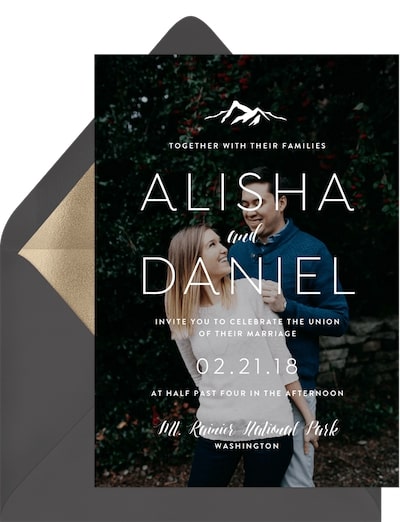
Design: Robinson Creative House
This mountain-themed invite puts you in the spotlight. Add your favorite couple’s photo and customize the typography and color scheme to match your wedding vision.
2. Dried Palms Invitation

Design: Signature Greenvelope
This gorgeous invitation features gold foil palm fronds, making it ideal for desert weddings, elopements, remote beaches, and glamorous celebrations. Affordable pricing means you can fit this wedding invite into your budget without having to make sacrifices on other top priorities.Â
3. Terrarium Save the Date
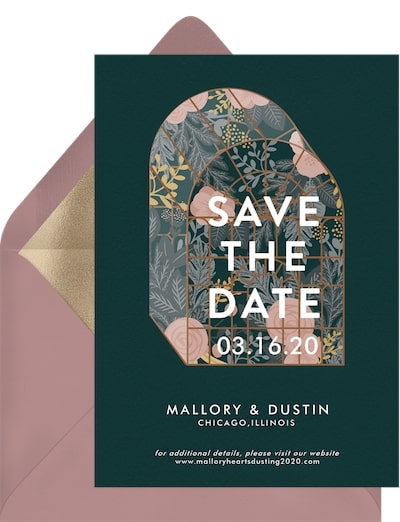
Design: Banter & Charm
This jaw-dropping save the date is sure to have guests saying “Yes!” when they RSVP. Stunning florals shine in a glittering terrarium, inviting guests to your magical day. Best of all, you can customize the stationery suite without breaking the bank.
Plan Your Happily Ever After
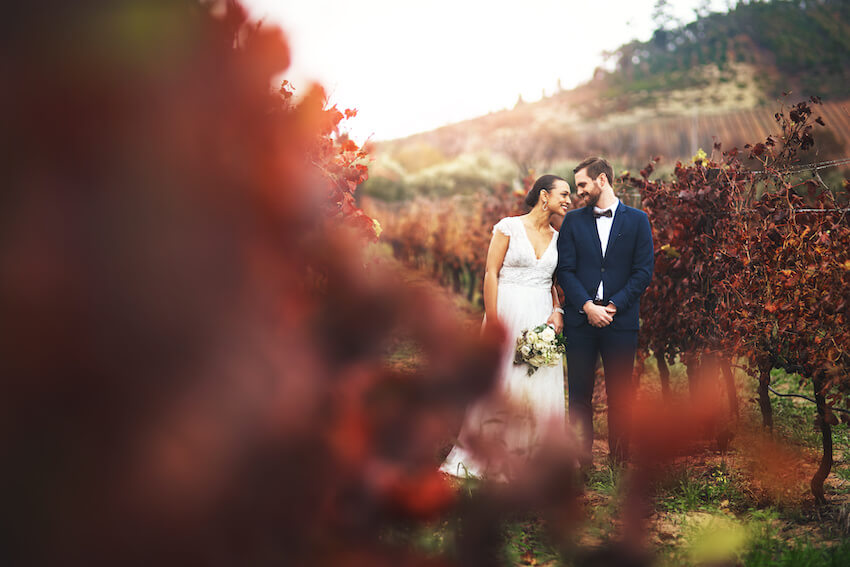
When it comes to wedding planning, the thought of doing it is often more intimidating than the actual process. In fact, planning a wedding with your soon-to-be-spouse is a great way to bond, manage finances together, and celebrate your love.
Set aside room in your wedding budget breakdown for wedding stationery from Greenvelope. Our cost-effective digital wedding invitation stationery is completely customizable. Put your own spin on the design with our editing tool that lets you change the typography, color scheme, and photos. Personalize the card even more with wax seals, music, and other elements that are as gorgeous as they are affordable. Â
No matter what type of wedding you’re planning, starting on a solid financial path will ensure you have a great start to your happily ever after.

